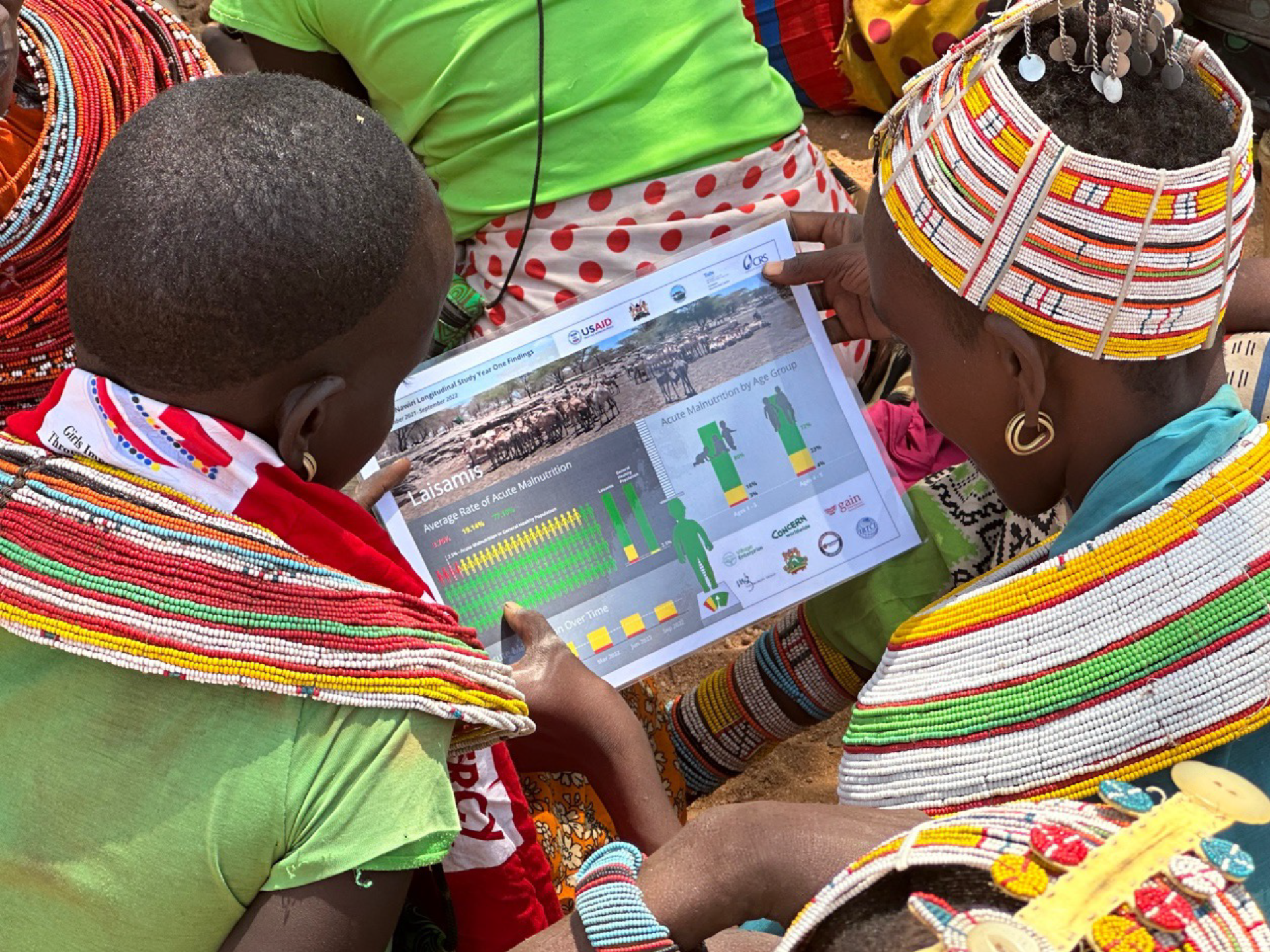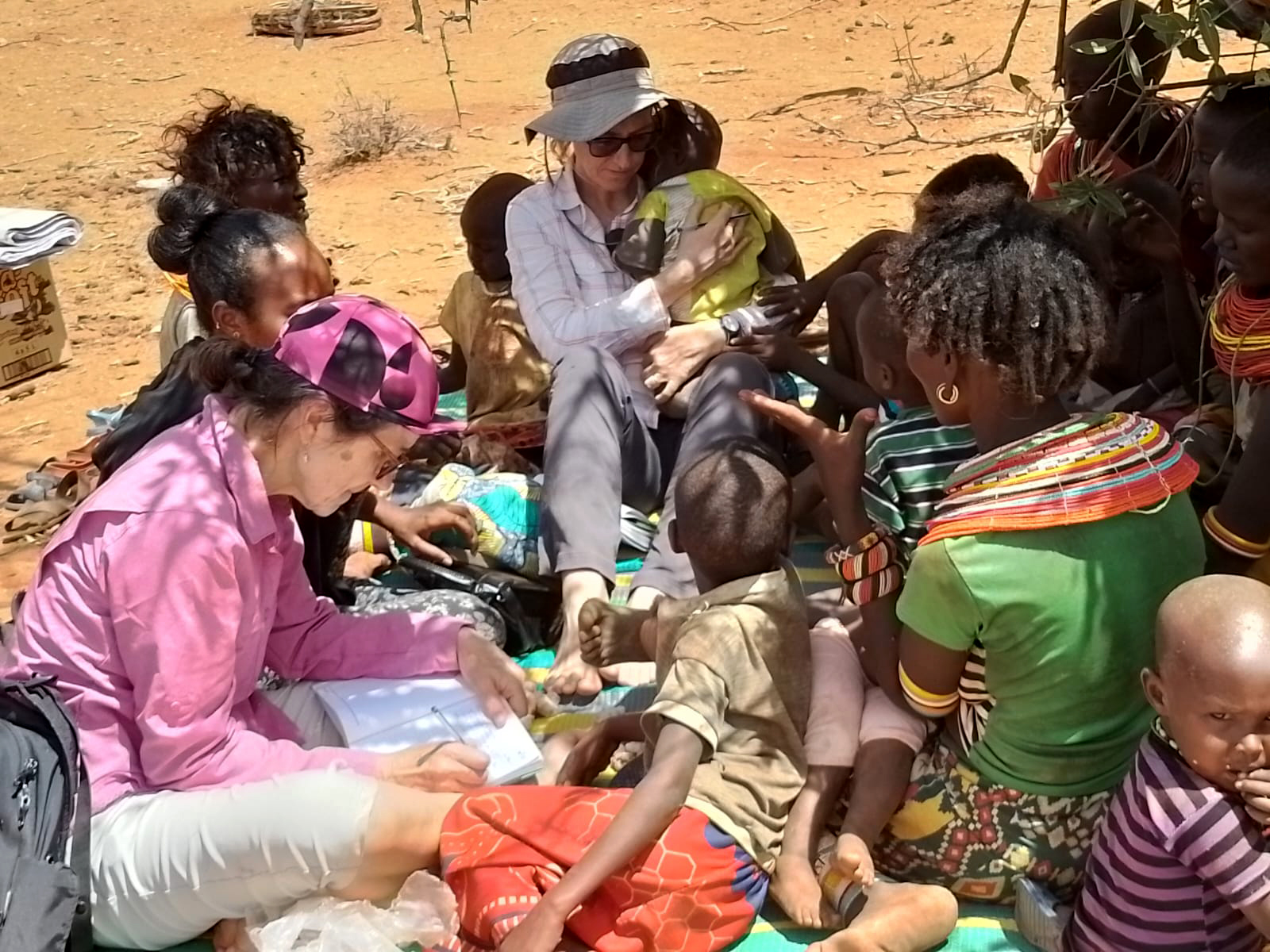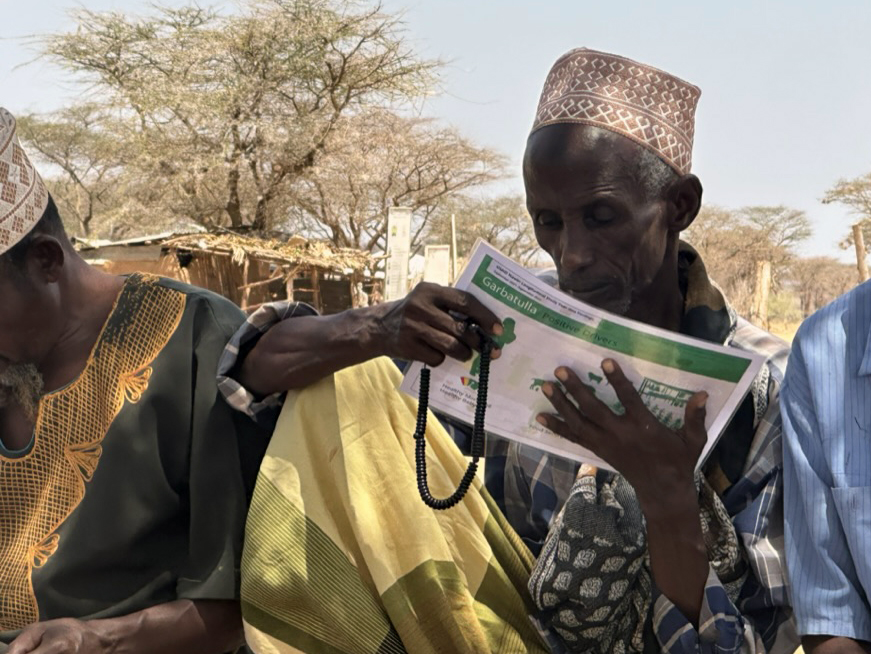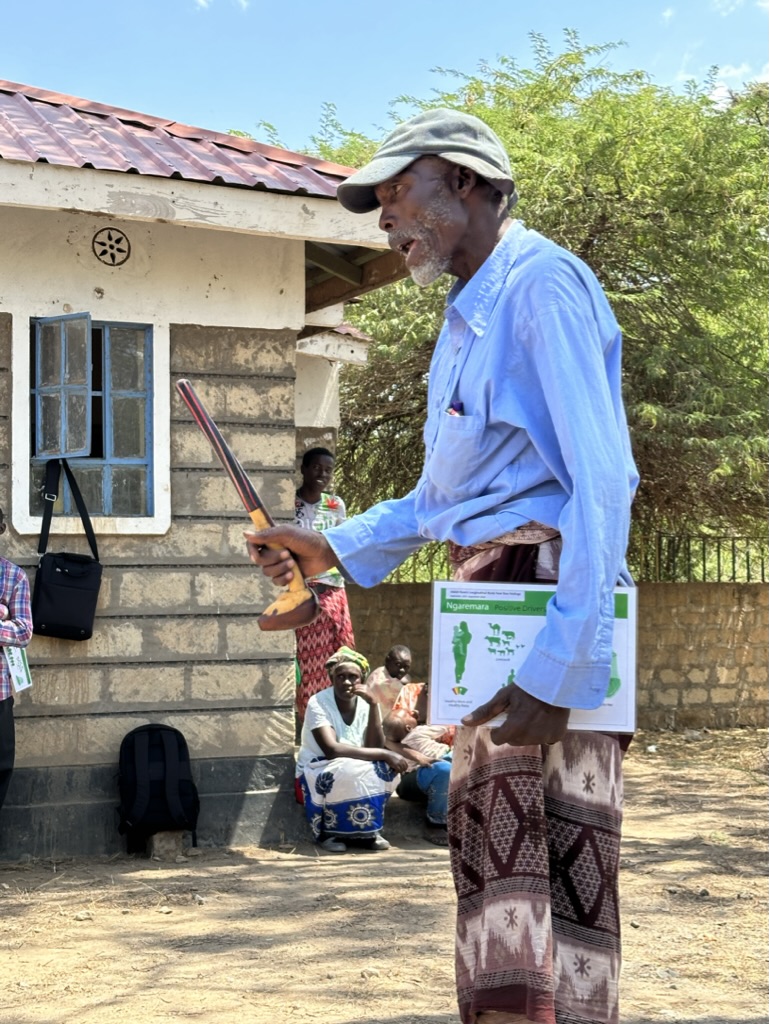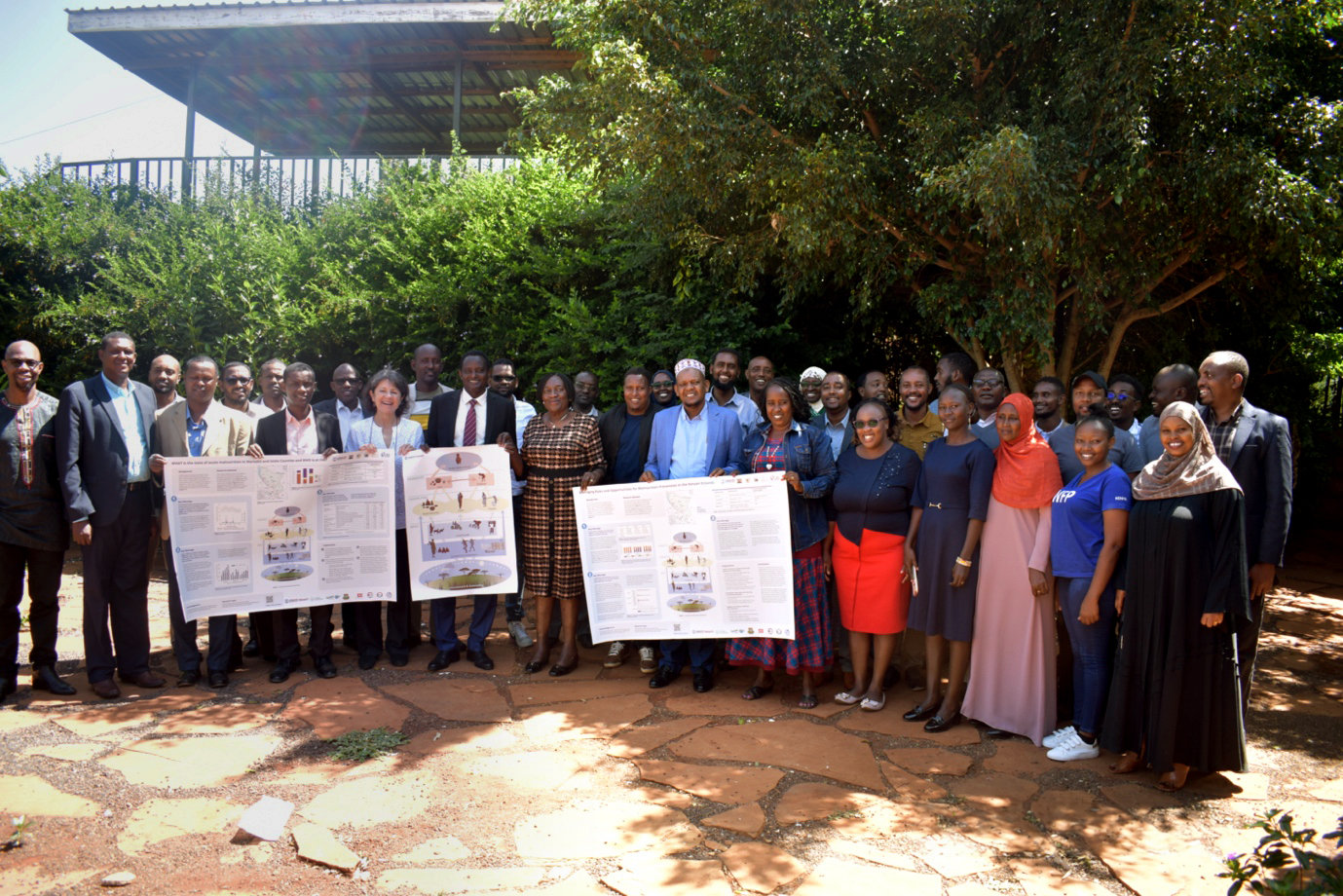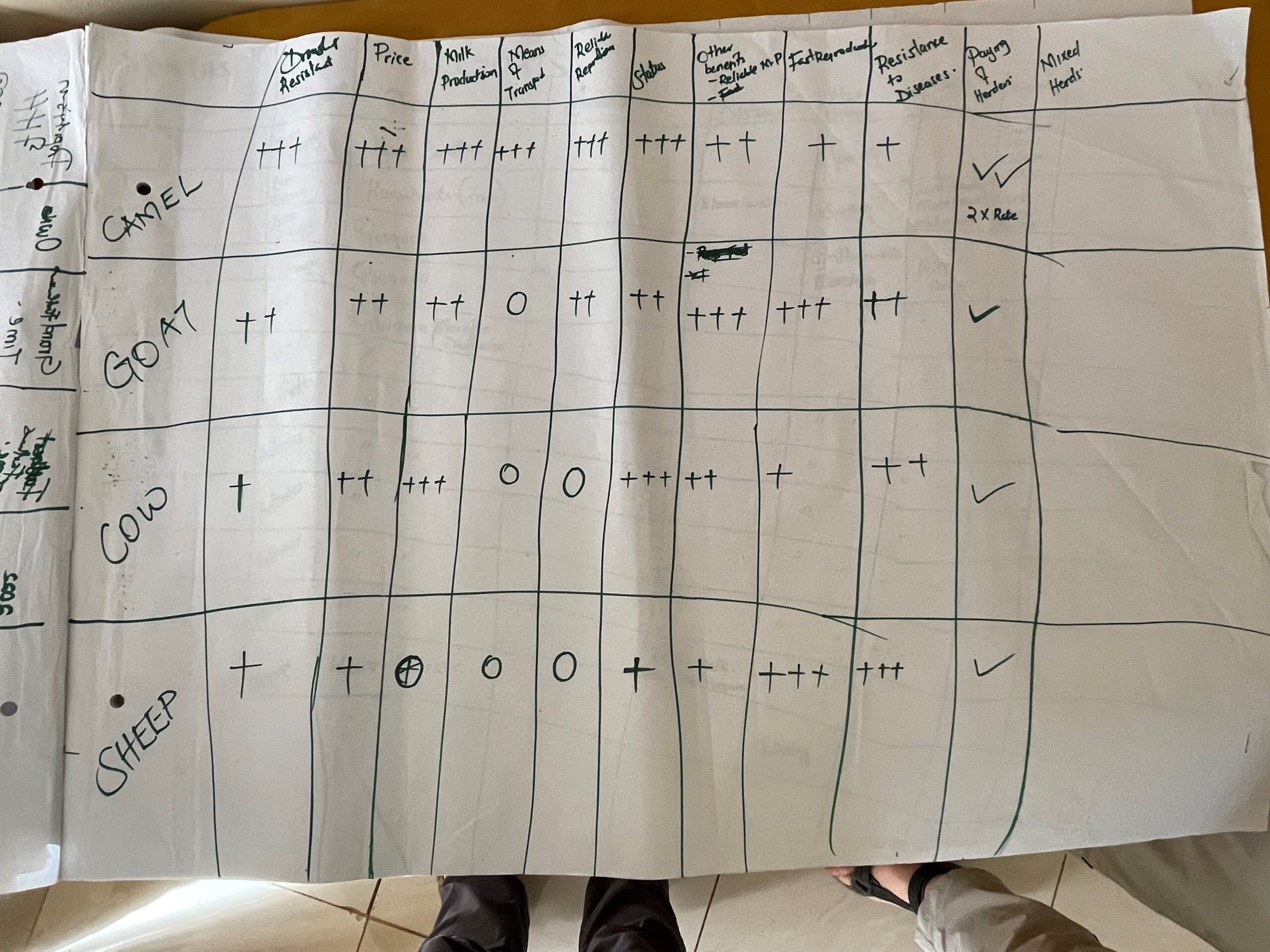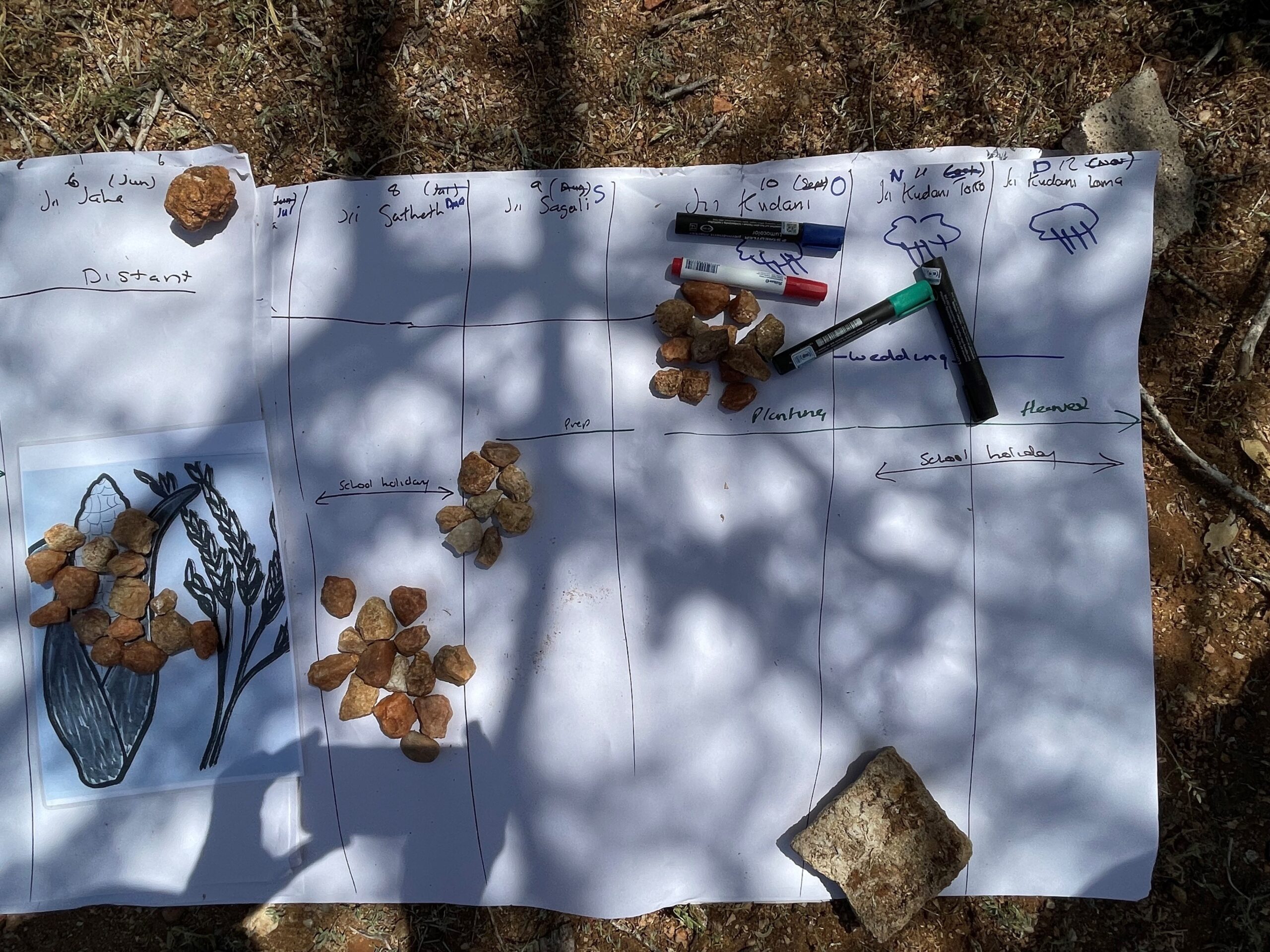USAID Nawiri Research and Learning
Acute malnutrition in northern Kenya
High rates of child Global Acute Malnutrition (GAM) are a continuing problem in Kenya’s arid and semi-arid lands (ASALs), despite ongoing humanitarian and development efforts. Elsewhere in Kenya, wasting rates are lower, and rates of stunting and underweight are generally improving, which puts the situation in the Kenyan ASALs in sharp contrast.
Part of the failure to sustainably address persistent acute malnutrition is that stakeholders lack evidence on and understanding of the drivers of acute malnutrition, which limits their ability to find solutions to address it.
The USAID Nawiri Project
USAID Nawiri is a five-year, evidence-based development project in four of Kenya’s northern counties. Catholic Relief Services (CRS) leads a consortium of partners in Isiolo and Marsabit Counties, and the Feinstein International Center provides research and capacity-building support to CRS. The project is funded by USAID’s Bureau for Humanitarian Assistance.
Conceptual framework for acute malnutrition in drylands
The USAID Nawiri research and learning agenda is based on the conceptual framework for addressing acute malnutrition in drylands pictured below. This framework was first presented in 2020 in a Feinstein brief and later discussed as part of a webinar series.
Below is a visualization of the framework developed for local use in the USAID Nawiri project.
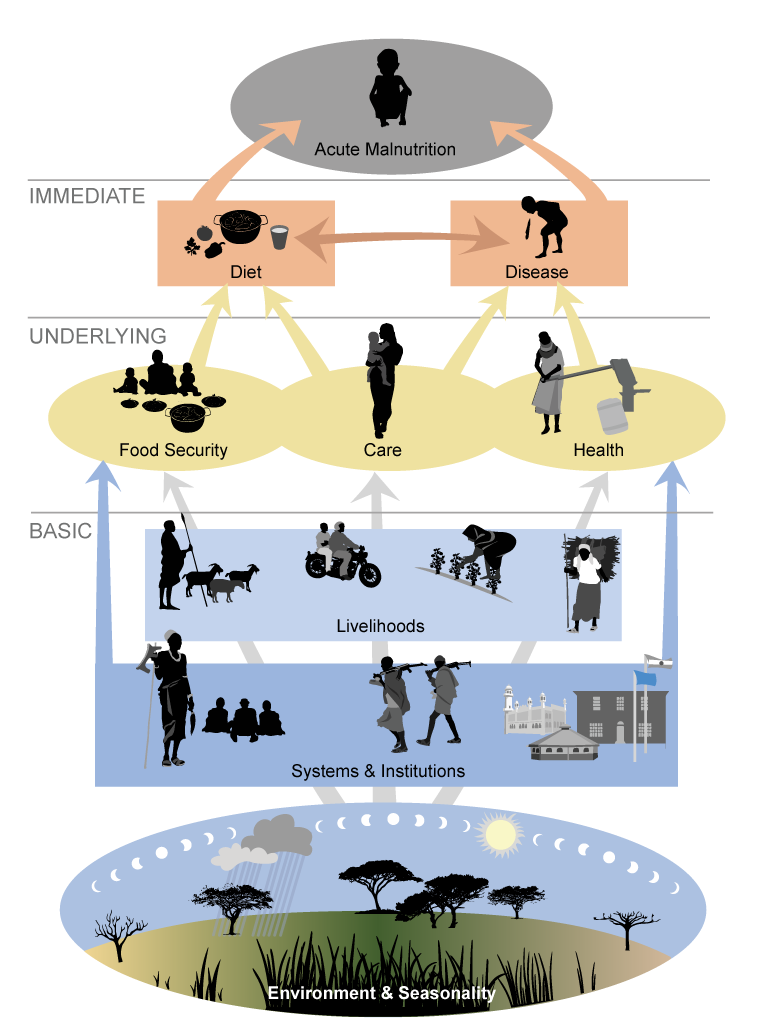
The Feinstein team is working with Kenyatta University (Co-principal Investigator Professor Sophie Ochola) and has completed a desk study series, stakeholder analyses, formative research studies, and a two-year longitudinal study to help USAID Nawiri use the framework to design and implement a context-specific program.
The final research report, ‘Back to Basics,’ and briefing paper are now available under the Publications tab.
Kenyatta University
Professor Sophie Ochola, Co-principal Investigator
Elijah Odundo, Researcher
Catholic Relief Services Field Offices, Isiolo and Marsabit Counties
Caritas County Offices, Isiolo and Marsabit Counties
Under the USAID Nawiri project, Feinstein has completed desk studies, stakeholder analyses, and formative research projects, and is finalizing the analysis of a longitudinal study.
Longitudinal study
To build an evidence base on the seasonality of malnutrition and its drivers in the Kenyan ASALs, Feinstein, CRS, and Kenyatta University are carrying out a two-year, mixed-methods, longitudinal panel study that includes short surveys every other month, qualitative inquiries, and annual surveys at the end of each year.
The study includes four sentinel sites in Isiolo and Marsabit, each roughly representing pastoralist, agropastoralist, diversified peri-urban pastoralists, and diversified lakeside pastoralist communities.
The evidence collected through this study will help promote a shared understanding of the causes of malnutrition among stakeholders, enabling local, national, and international stakeholders to better design and target prevention and treatment strategies and approaches.
Related documents:
- Learning briefs on the state of acute malnutrition, pastoral mobility, and livelihoods in Isiolo and Marsabit Counties, Kenya
- Year 1 Longitudinal Study Research Report
- Infographics and posters presenting key messages, targeting stakeholders at the county level
- Survey instrument
Desk studies
Feinstein completed a series of desk studies to explore the following research questions:
| Conceptual Framework Level | Research Question | Desk Study |
| Immediate and underlying drivers | What are the immediate and underlying causes of acute malnutrition and what is their relationship to nutritional status of children and women? | Drivers of child malnutrition in the Kenya arid and semi-arid lands (Marshak and Venkat 2021) |
| Basic systemic drivers | How do livelihood systems operate as part of the basic causes of malnutrition? | Livelihood systems in Isiolo and Marsabit counties (Stites 2021) |
| What are the evidence gaps on the intersection of gender and acute malnutrition in Isiolo and Marsabit counties? | Gender gap analysis in Isiolo and Marsabit counties, Kenya (Stites and Dykstra-McCarthy 2021) | |
| What are the systems and institutional arrangements for accessing and managing natural resources? | Natural resource management and nutrition (Birch 2021) | |
| What is the relationship between patterns of acute malnutrition with environmental trends, climate, and conflict shocks, in the two counties? | Climatic variability and disasters in Kenya’s arid and semi-arid lands (Marshak and Venkat 2021) |
Stakeholder analyses
Feinstein and CRS are working to understand stakeholder perspectives through surveys, conversations, and learning events.
View the report on the first stakeholder survey.
Participatory epidemiology
In 2018, Feinstein piloted participatory epidemiology (PE) to look at the causes and seasonality of malnutrition in pastoralist and agro-pastoralist communities in Karamoja, Uganda. The results of the Karamoja study encouraged the USAID Nawiri partners to further pilot and test the PE approach in the context of the Kenyan ASALs.

Back to Basics: Understanding the Problem of Persistent Global Acute Malnutrition in Isiolo and Marsabit Counties, Kenya
This report presents the final findings from the USAID Nawiri longitudinal study, which investigated the drivers of the persistently high rates of acute malnutrition from September 2021 to September 2023.

Understanding Child Acute Malnutrition in Isiolo and Marsabit Counties, Kenya
This learning brief examines the drivers of malnutrition in Isiolo and Marsabit Counties and their implications for policy and programs.

WHAT is the state of acute malnutrition in Marsabit and Isiolo Counties, and WHO is at risk?
This learning brief presents preliminary findings about the cause (drivers) of persistently high rates of child acute malnutrition in select sites in Isiolo and Marsabit Counties.

Mobility Matters: The Benefits of Pastoralist Mobility for Nutrition in Marsabit and Isiolo Counties, Kenya
This learning brief presents preliminary findings on strategic mobility and its nutritional benefits to pastoral and agropastoral communities in select sites in Isiolo and Marsabit Counties, Kenya.

Vulnerability, Risk, and Resilience: The implications for the drivers of malnutrition in Isiolo and Marsabit Counties, Kenya
This learning brief explores the continuity and changes to livelihoods in select sites in Isiolo and Marsabit Counties, Kenya, and reviews the implications of the continuity and the changes on the drivers of child acute malnutrition.

Local Knowledge and Perceptions on the Causes of Malnutrition among the Dasanech in Kenya
This study share the results of a rapid community-level analysis of the causes of acute malnutrition among the Dasanech in northern Kenya.

Brief: Livelihoods Change, Drought, and Malnutrition in Illeret, Northern Kenya
This brief report on how recent livelihoods trends such as the loss of the delta and recent shocks such as the 2022 drought have directly impacted food security and nutrition in Illeret, Kenya.

A synthesis of research and learning on persistent global acute malnutrition in the Kenyan arid and semi-arid lands
This report synthesizes the Nawiri research findings up to the end of September 2021 in relation to the conceptual framework for addressing acute malnutrition in northern Kenya.

Mount Kulal evidence brief: women’s knowledge of child malnutrition
This brief presents the results from the Mount Kulal pilot that investigated the seasonality and basic causes of acute malnutrition in northern Kenya.

Climatic variability and disasters in Kenya’s arid and semi-arid lands (Nawiri desk study)
This desk study provides an overview of the patterns and variability in climate, conflict, disasters, and nutrition outcomes using secondary data for Marsabit and Isiolo counties in northern Kenya.

Gender gap analysis on Isiolo and Marsabit counties, Kenya (Nawiri desk study)
The gender gap analysis analyzes available information and identifies evidence and knowledge gaps around livelihood systems from a gender perspective in Isiolo and Marsabit Counties in northern Kenya.

Using participatory epidemiology to investigate the causes and seasonality of acute malnutrition in Marsabit and Isiolo counties, northern Kenya: methods and experiences
This report describes the methods used and experiences from a community-level analysis of the causes and seasonality malnutrition in selected locations in Marsabit and Isiolo counties in Kenya.

Livelihood systems in Isiolo and Marsabit County (Nawiri desk study)
This desk study examines the existing knowledge on how livelihood systems influenced nutritional outcomes in the Marsabit and Isiolo counties in northern Kenya.

Drivers of malnutrition in the Kenyan arid and semi-arid lands (Nawiri desk study)
The review confirms that acute malnutrition is a problem in the Kenya ASALs, and that most of the drivers are under-studied, and yet several specific assumptions permeate the literature and recommendations.

Natural resource management and nutrition (Nawiri desk study)
This study seeks to understand how land access and natural resource management policies, institutions, and relationships are changing in the Kenyan ASALs, with what consequences and for whom, and the potential impact on livelihoods, food security, and nutritional status.

Women’s knowledge on the seasonality and causes of child malnutrition in Isiolo county, Kenya
This report presents the results of a participatory analysis of the causes and seasonality of malnutrition in Borana children and mothers in Cherab and Chari wards in Isiolo county, Kenya.

Women’s knowledge on the seasonality and causes of child malnutrition in Marsabit county, Kenya
This report presents the results of a participatory analysis of the causes and seasonality of malnutrition in children and mothers in North Horr and Loiyangalani wards in Marsabit county, Kenya.

A preliminary stakeholder analysis for addressing global acute malnutrition in the Kenyan ASALs
This report describes findings from a preliminary stakeholder survey on perceptions of malnutrition in northern Kenya.
WEBINAR: Back to Basics: Understanding the Problem of Persistent Global Acute Malnutrition
Child acute malnutrition rates remain unacceptably high in northern Kenya, with rates of global acute malnutrition persistently exceeding the emergency threshold (15%). This webinar presents the findings and implications of...
AUGUST 2024
Workshop: County government communication and dissemination of research findings, Marsabit and Isiolo Counties, Kenya
Posters
FEBRUARY 12–15, 2024
Workshop: County government communication and dissemination of research findings, Marsabit and Isiolo Counties, Kenya
Malnutrition drivers infographic • Posters
NOVEMBER 2023
Presentation: Drivers of Acute Malnutrition: Panel Sentinel Site Study, Northern Kenya Marsabit and Isiolo Counties
Action Against Hunger Research for Nutrition Conference
OCTOBER 2023
Presentation: USAID Nawiri Pause & Reflect Workshop
Naivasha, Kenya
SEPTEMBER 2023
Community dissemination of research findings, Marsabit and Isiolo
Handouts • Posters
AUGUST 2023
Presentation: National Health & Nutrition Deep Dive Workshop
Naivasha, Kenya
MAY 2023
Workshop: Year 1 findings from the USAID Nawiri longitudinal research study
MARCH 2023
Presentation: Findings from the Longitudinal Study in Marsabit and Isiolo
USAID Nawiri National Government Learning Event (Nairobi, Kenya)
FEBRUARY 2023
Presentation: Findings from the Longitudinal Study in Marsabit and Isiolo
USAID Nawiri National Government Learning Event (Naivasha, Kenya)
JANUARY 2023
Presentation: “False Normal?” Findings from the Longitudinal Study
Catholic Relief Services (Nairobi, Kenya)
APRIL 2022
Blog Post: Pre-Research in Northern Kenya: The Gift of a Scoping Study

